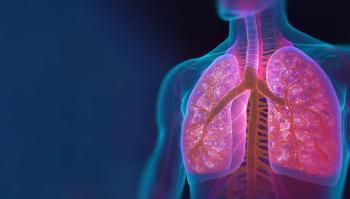
- November 2013 Cough & Cold
- Volume 79
- Issue 11
Nonprescription Products for Managing Cough, Cold, and Flu
Patients overwhelmed by the options in these product categories will appreciate a pharmacist's guidance.
Patients overwhelmed by the options in these product categories will appreciate a pharmacist's guidance.
Every year, millions of individuals utilize the various nonprescription cough, cold, and flu medications currently on the market to treat and manage symptoms generally associated with colds and influenza.
The plethora of available products in this category may be overwhelming and confusing to many patients, especially those with pre-existing medical conditions. Pharmacists can be an essential source of information when it comes to aiding patients in the selection and proper use of these nonprescription products (Scroll Down for Table 1).
Symptoms Associated with the Common Cold and Influenza
The signs and symptoms of the common cold are often confused with influenza or other respiratory virus infections.1,2 Online Table 2 lists the symptoms normally associated with the common cold and influenza.Table 2: Differentiating Between Cold Symptoms and Flu Symptoms.
Table 2: Differentiating Between Cold Symptoms and Flu Symptoms
Cold
Flu
- Gradual sore or irritated throat. Fever is very rare, but if present, it is low grade (rarely over 100ºF). Symptoms tend to develop over 1-3 days.
- Sore throat is rare. Onset of symptoms is rapid (within 3-6 hours), especially fever. High fever (100ºF to 102ºF) is usually present in at least 80% of all flu cases. A temperature of ≥100°F for 3-4 days is associated with the flu.
- A hacking, productive (mucus-producing) cough is often present with a cold.
- A nonproductive (nonmucus producing) cough is usually present with the flu.
- Body aches and pains are slight.
- Aches and pains are severe.
- Nasal congestion is very common and typically resolves spontaneously within a week.
- Nasal congestion not common.
- Chills are uncommon.
- 60% of flu patients experience chills.
- Mild fatigue
- Moderate to severe fatigue
- Sneezing
- Sneezing is not common.
- Headaches are uncommon.
- Headache is common (present in 80% of flu cases).
- Mild to moderate chest discomfort
- Chest discomfort is often severe.
Adapted from references 4-7.
Nonprescription Products
For the management of common cold and flu symptoms, nonprescription products include decongestants, antihistamines, expectorants, cough suppressants, antipyretics/analgesics, and anesthetic and antiseptic products (Online Tables 3 and 4). These products are available in a variety of dosage forms to meet the needs of various patient populations. When recommending any of these products, pharmacists should evaluate the patient’s symptoms, medical conditions, allergy history, and current drug regimen, as well as lifestyle and personal preferences. In addition to cold and flu preparations formulated for the pediatric patient population, there are products formulated specifically for the diabetic patient population that are free of sugar, alcohol, dextrose, sucrose, sorbitol, sodium, fructose, glycerin, and dyes, as well as products for those with hypertension, such as Coricidin HP products (Schering-Plough HealthCare), which are decongestant free. Formulations of cough, cold, and flu products include single-entity products and combination products for multi-symptom relief. To avoid the unnecessary use of medications or therapeutic duplications, patients should be advised to exercise caution when using multi-ingredient products.
Table 3: Drug Classes Used to Manage Symptoms Associated with Cold and Flu
Drug Class
Examples of Active Ingredients
Indication
Adverse Effects
Comments
Local anesthetics
Benzocaine or dyclonine hydrochloride
For the management and temporary relief of pain associated with sore throats
Patients with a history of allergic reactions to anesthetics should avoid products with benzocaine.
Patients should not eat or drink anything until numbing sensation goes away.
They may be used every 2-4 hours as needed.
Some products also contain local antiseptics (eg, cetylpyridinium chloride, hexylresorcinol) and/or camphor or menthol.
Decongestants
- Oral decongestants: pseudoephedrine and phenylephrine
- Intranasal decongestants include ephedrine, epinephrine, levmetamfetamine, naphazoline, phenyleprhine, tetrahydrozoline and long acting decongestants such as oxymetazoline
They are used to treat sinus and nasal congestion and are indicated for the temporary relief of nasal and eustachian tube congestion and cough associated with postnasal drip.
Common adverse effects associated with the use of oral decongestants include insomnia, restlessness, anxiety, nervousness, palpitations, and tachycardia.
- The use of decongestants may exacerbate certain medical conditions that are sensitive to adrenergic stimulation (ie, hypertension, diabetes, coronary artery disease, prostatic hypertrophy, and elevated intraocular pressure).
- The overuse of topical decongestants is associated with rhinitis medicamentosa (rebound congestion), and use should be limited to 3-5 days to avoid this condition.
Systemic analgesics
Acetaminophen, acetylsalicylic acid, ibuprofen, or naproxen
For pain relief, headache, and fever associated with the common cold and the flu
GI upset, nausea, vomiting
Caution should be used in patients with a history of GI upset or with renal or hepatic impairment, or patients on pharmacologic agents that interact with these agents.
Cough expectorants
Guaifenesin
Indicated for the symptomatic relief of acute ineffective productive cough
Nausea, vomiting, and GI upset
No known drug—drug interactions
Antitussives
Dextromethorphan (most commonly found in OTC cough products)
Indicated for the suppression of nonproductive cough caused by chemical or mechanical respiratory tract irritation
Nausea, vomiting, GI discomfort, dizziness, and constipation
Use of dextromethorphan should be avoided with monoamine oxidase inhibitors because of the risk of serotonergic syndrome.
GI = gastrointestinal.
Adapted from reference 1.
Table 4: Examples of Nonprescription Cough and Cold Products
Lozenges/Sprays /Liquids for Sore Throat
- Cepacol lozenges
- Cepacol Dual Relief Spray
- Cepastat lozenges
- Chloroseptic lozenges, sprays, medicated strips
- Cold-Eeze lozenges with zinc
- Hall’s Sore Throat Lozenges
- Ricola herb sore throat lozenges
- Sucrets sore throat lozenges
- Tylenol Cold Sore throat liquid
Decongestants
Systemic decongestants
- Advil Cold & Sinus
- Aleve-D Sinus & Cold
- Claritin-D
- Mucinex-D
- Sudafed
- Sudafed PE
- Triaminic Thin Strips Cold with Stuffy Nose
- Tylenol Sinus
- Zyrtec-D
Intranasal decongestants
- Afrin Original Nasal Spray
- Dristan
- Little Noses Decongestants Nose Drops
- Mucinex Nasal Spray
- Nasalcrom
- Neosynephrine
- Sudafed OM
- Vicks Early Defense Nasal Gel
- Vicks Sinex Nasal Spray
Nasal Decongestant Inhalers
- Benzedrex Inhaler
- Vicks Vapor Inhaler
Expectorants
- Benylin Wet Cough (available in pediatric formulation)
- Humibid
- Mucinex
- Robitussin Chest Congestion
Antitussives
- Creomulsion Cough Syrup
- Delsym Cough Syrup
- Dimetapp
- Mucinex DM
- Robitussin Cough Long Acting
- Sucrets DM Cough Formula
- Triaminic Long Acting Cough
- Tylenol Cold & Cough
- Vicks Formula 44
- Vicks Nyquil
Combination Products
- Advil Cold & Sinus
- Aleve D Sinus and Cold
- Alka-Seltzer Mucus and Congestion
- Alka-Seltzer Plus Cold and Sinus
- Benadryl
- Claritin
- Contac Cold + Flu
- Coricidin HBP
- Delsym
- Dimetapp Cold and Cough
- Dimetapp Nighttime Cold and Congestion
- Motrin Cold
- Mucinex D
- Mucinex DM
- Mucinex Fast-Max Cold, Flu and Sore Throat
- Mucinex Multi Symptom Cold
- Nyquil Cold and Flu Relief
- Pediatric Vicks Formula 44e Cough and Congestion
- Pedicare Children’s Fever Reducer Plus Flu
- Robitussin
- Sudafed
- Theraflu Cold Products
- Triaminic Chest and Nasal Congestion Liquid
- Triaminic Cold and Cough
- Tylenol Cold
- Vicks Dayquil Liquicaps
- Vicks Formula 44
- Vicks Nature Fusion Cold and Flu Relief
- Vicks Nyquil
- Vicks VapoSyrup
- Zicam
Nonprescription Products for Cough
For the treatment and management of cough, oral antitussives, expectorants, and topical antitussives are available. Guaifenesin is the only FDA-approved expectorant and is indicated for the symptomatic relief of acute ineffective productive cough.8 Available FDA-approved nonprescription oral antitussives include codeine, dextromethorphan, and diphehydramine.8 At antitussive dosages, codeine is classified as a Schedule C-V narcotic and is available without a prescription in many states.8 Codeine is indicated for the suppression of nonproductive cough caused by chemical or mechanical respiratory tract irritation.8 Codeine acts centrally on the medulla to increase the cough threshold; when used at antitussive doses, codeine has low toxicity and little risk of being addictive.8 The majority of nonprescription cough suppressants contain dextromethorphan, which is indicated for the suppression of nonproductive cough caused by chemical or mechanical respiratory tract irritation.8 Diphenhydramine is classified as a nonselective first-generation antihistamine with significant sedating and anticholinergic properties.8 It acts centrally in the medulla to increase cough threshold.8 Diphenhydramine is indicated for the suppression of nonproductive cough caused by chemical or mechanical respiratory tract irritation. Camphor and menthol are the only 2 FDA-approved topical antitussives.8
Conclusion
Prior to recommending any of these products, pharmacists should always screen the patient’s allergy history, medical history, and current medication profile to check for possible interactions or contraindications. Pregnant and lactating females and those with chronic medical conditions should always consult their primary health care provider before using any nonprescription medication. During counseling, patients should be reminded to read labels prior to administration and to check ingredients, especially if using multiple products to avoid therapeutic duplications or excessive dosing. It is also important for patients to adhere to the recommended dosages, administration guidelines, and duration of use. To ensure proper dosage and accuracy, it is particularly vital to remind parents/caregivers to always utilize calibrated measuring devices when administering liquids and read all labels prior to administering medications to children. Parents/caregivers should only give children nonprescription products manufactured specifically for the pediatric population; when there is doubt regarding the appropriateness or dose of a medication, a pediatrician or pharmacist should be consulted.
During counseling, pharmacists should seize the opportunity to stress the importance of obtaining a yearly flu vaccination and suggest various nonpharmacologic measures that may help relieve cold and flu symptoms, such as the use of vaporizers or humidifiers, saline nasal sprays (eg, Little Noses Saline Mist for children [Prestige Brands, Inc], Ocean Nasal Spray [Valeant Consumer Products]), or nonmedicated Breathe Right (GlaxoSmithKline) strips to relieve nasal congestion. Patients should maintain adequate hydration and rest. Patients should also be encouraged to seek medical attention from their primary health care provider for sore throat that persists, cough lasting more 14 days, worsening or lingering symptoms, high fever, or signs of infection.
Studies have shown that implementation of various preventive measures has been effective for potentially decreasing or preventing the transmission of colds and flu. These measures include routine hand washing, use of hand sanitizers when soap and water are not available, avoiding direct contact with an individual with a cold or the flu, and always sneezing or coughing into a tissue and not into the hand.
Ms. Terrie is a clinical pharmacy writer based in Haymarket, Virginia.
References
- Scolaro K. Disorders related to colds and allergy. In: Krinsky D, Berardi R, Ferreri S, et al, eds. Handbook of Nonprescription Drugs. 17th ed. Washington, DC: American Pharmacists Association; 2011:179-190.
- Common cold. National Institute of Allergy and Infectious Diseases website. http://www3.niaid.nih.gov/topics/commonCold. Accessed October 4, 2013.
- Types of influenza viruses. CDC website. www.cdc.gov/flu/about/viruses/types.htm. Accessed October 1, 2013.
- Flu season. FluFACTS website. www.flufacts.com/about/season.aspx. Accessed October 1, 2013.
- Is it a cold or the flu? National Institute of Allergy and Infectious Disease website. www.niaid.nih.gov/topics/flu/documents/sick.pdf. Accessed October 2, 2013
- Cold and flu: what’s the difference? Tylenol Product website. www.tylenol.com/cold-flu/cold-flu-whats-the-difference. Accessed October 2, 2103.
- Flu symptoms. Tamiflu website. www.tamiflu.com/about/pc_flu.jsp. Accessed October 3, 2013.
- Tietze K. Cough. In: Krinsky D, Berardi R, Ferreri S, et al, eds. Handbook of Nonprescription Drugs. 17th ed. Washington, DC: American Pharmacists Association; 2011:205-216.
Articles in this issue
about 12 years ago
Zinc and Zinc Preparations for Colds: An Update for Pharmacistsabout 12 years ago
Your Compounding Questions Answeredabout 12 years ago
Pet Peevesabout 12 years ago
Can You Read These Rxs?about 12 years ago
Case Studiesabout 12 years ago
A Healthy Diet May Reduce Pancreatic Cancer Riskabout 12 years ago
Diagnosis Terminology Affects Treatment Decisionsabout 12 years ago
Yoga May Help Cancer Survivors Catch Quality Zzzsabout 12 years ago
Teens Developing Healthier HabitsNewsletter
Stay informed on drug updates, treatment guidelines, and pharmacy practice trends—subscribe to Pharmacy Times for weekly clinical insights.















































































































































































































